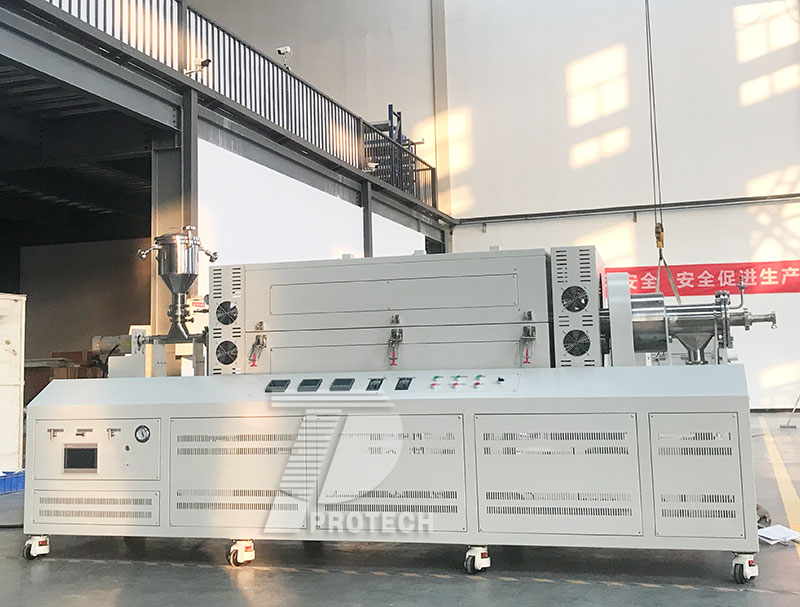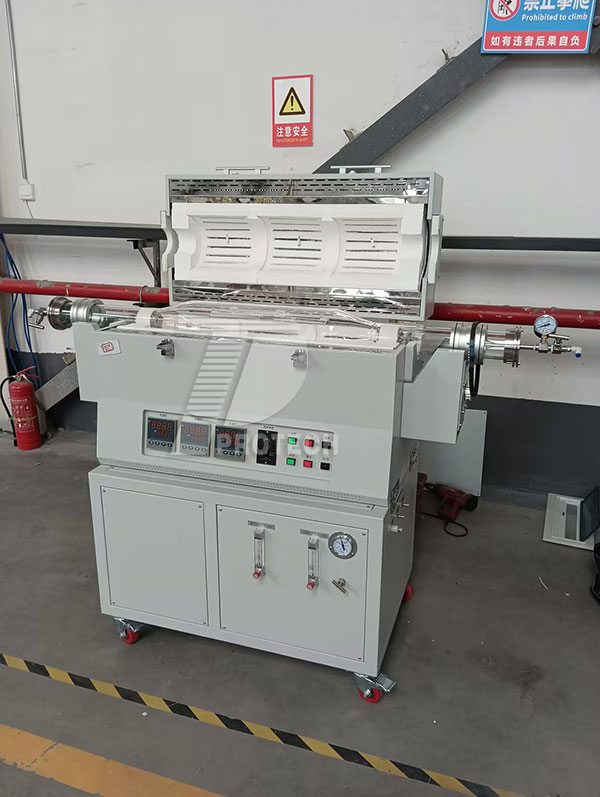


NEWS
When choosing a rotary sintering furnace, multiple factors need to be considered to ensure that the selected equipment can meet your specific needs. Here are some key purchasing points and suggestions:

A commonly used rotary sintering furnace (click on the image to view product details)
1. Determine sintering requirements
Sintering temperature: First, clarify the maximum sintering temperature you need. Different models of rotary sintering furnaces have different maximum operating temperatures. For example, some models may reach 1000 ℃ (such as PT-TX1000-L150CK3W rotary tube sintering furnace), while higher performance sintering furnaces may reach higher temperatures.
Sintering materials: Consider the type and characteristics of the materials to be sintered, such as melting point, thermal stability, etc., to ensure that the selected sintering furnace is suitable for processing these materials.
2. Technical parameters
Furnace size: Choose the appropriate furnace size according to the production scale. The size of the furnace (such as pipe diameter and length) will affect the loading capacity and production capacity of the sintering furnace.
Heating method: There are various heating methods for rotary sintering furnaces, and the commonly used one is resistance wire heating. Understand the advantages and disadvantages of various heating methods and choose the heating method that suits your needs.
Temperature control accuracy: Temperature control accuracy is important for sintering quality. Choose a sintering furnace with a high-precision temperature control system, such as using an intelligent PID controlled temperature controller, to ensure the accuracy and stability of temperature control.
3. Rotating system
Adjustable speed range: Consider whether the speed of the rotating system is adjustable and whether the adjustable range meets your needs. The tray speed of PT-T1400-X rotary tube furnace is variable frequency controlled within the range of 0-5r/min, which provides more possibilities for different sintering processes.
Rotation stability: The stability of the rotation system has a significant impact on the uniformity of sintering. Choose a sintering furnace with a stable rotating system to ensure uniform heating of materials during the sintering process.
4. Safety and Protection
Safety facilities: Check whether the sintering furnace is equipped with necessary safety facilities, such as over temperature protectors, leakage protectors, short-circuit protectors, etc. These facilities can promptly cut off power or take other measures in case of equipment abnormalities to ensure the safety of personnel and equipment.
Ease of operation: Choose a sintering furnace that is easy to operate and maintain. This can not only reduce the training cost for operators, but also improve the reliability and service life of the equipment.
5. Cost and cost-effectiveness
Equipment cost: Consider the purchase cost, installation cost, and later maintenance cost of the sintering furnace. The prices of sintering furnaces of different brands and models vary greatly, so it is necessary to choose according to the budget.
Cost effectiveness: Based on comprehensive consideration of the above factors, choose a sintering furnace with higher cost-effectiveness. A cost-effective sintering furnace can not only meet your needs, but also save costs in long-term use.
6. Brand and after-sales service
Brand reputation: Choose a better brand sintering furnace. A good brand usually has a more complete product system, more reliable product quality, and better after-sales service.
After sales service: Understand the after-sales service policy of the sintering furnace, including warranty period, repair response time, etc. Choose manufacturers that provide comprehensive after-sales service to ensure timely technical support and maintenance services during equipment use.

Customized rotary sintering furnace (click on the image to view product details)
So, when choosing a rotary sintering furnace, it is necessary to comprehensively consider multiple factors such as sintering requirements, technical parameters, rotary system, safety and protection, cost and cost-effectiveness, as well as brand and after-sales service. By carefully comparing and evaluating sintering furnaces of different brands and models, choose the equipment that is more suitable for the needs.Click to learn more Rotary tube furnaces! Or click on online customer service to learn more about product information!
Leave A Message